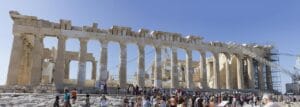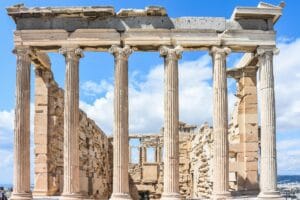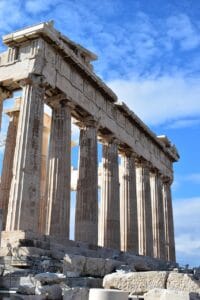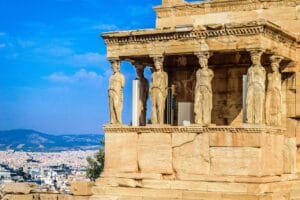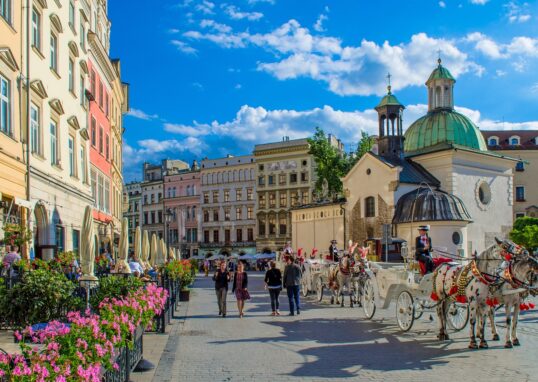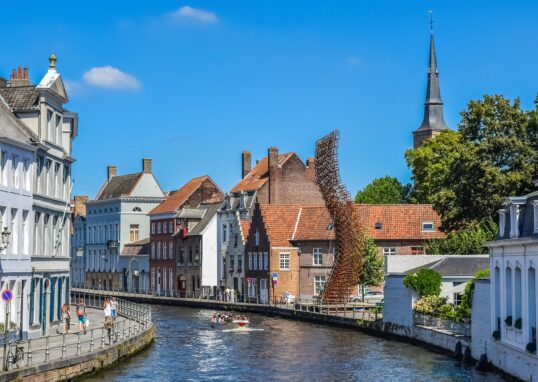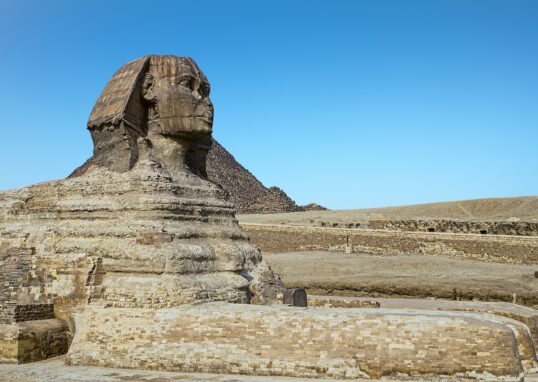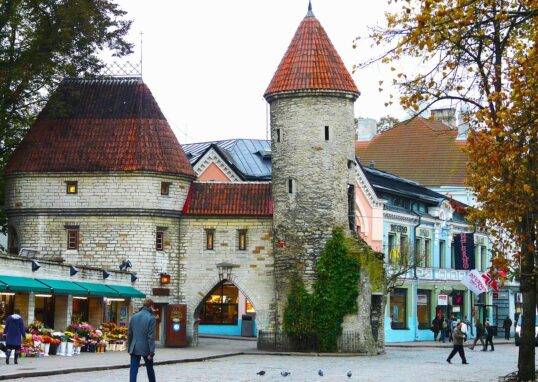
🏛️ The Acropolis of Athens: A Journey Through History and Culture
The Acropolis of Athens is a highly famous location. It is situated over the city of Athens, Greece. “Acropolis” is a term that translates to “high city.” It is a highly suitable name since the Acropolis is built on the peak of a rock hill. From this position, one can see almost the entire city. The Acropolis is more than an archaeological landmark. It represents Greek identity, culture, and history. It testifies to the grandeur of ancient Greek civilization. It represents democracy, intelligence, and art. That is why the Acropolis is not only meaningful to Greece but also to the world. Walking around the Acropolis is walking in history. There is a story behind every rock. Each temple proves the level of craftsmanship reached by the old builders. The whole complex elicits respect and wonder. In this blog, we will be talking about the Acropolis in detail. We will be discussing its history, architecture, and cultural importance. We will be learning about the nearby attractions of Athens as well. In total, this travel guide will help tourists understand why the Acropolis is a place that they must see.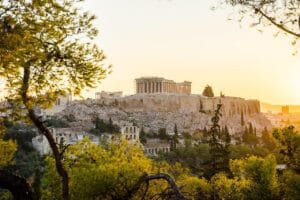
📜 History of the Acropolis
The Acropolis has been around since thousands of years ago. People lived in the rock hill as early as the Neolithic period, more than 5,000 years ago. At first, the site was used as a defensive area. Its location on the higher ground helped it remain safe from invading armies. Subsequently, the Acropolis was a place of worship. The ancient Greeks felt that the city was protected by the goddess Athena. She was the goddess of wisdom and war. The two, Athena and Poseidon, the sea god, both wished to be the patron of the city, as per legend. Poseidon presented a spring of saltwater, and Athena presented an olive tree. The people of the city preferred the olive tree. That is why the city of Athens got its name. The Acropolis grew in importance during the 5th century BCE. This is the Golden Age of Athens. Pericles’ city built wonderful temples, theatres, and monuments. These buildings celebrated the strength and culture of Athens. The most well-known temple, the Parthenon, was built during this time. Subsequently, the Acropolis has seen a lot of changes. In Roman times, new constructions were made. In Byzantine times, temples were turned into churches. In Ottoman times, temples were turned into mosques. Wars and invasions depleted resources, but the Acropolis remained a symbol of Athens.
🏛️ Main Structures of the Acropolis
The Acropolis is not one building. It is a complex consisting of several major buildings. Each one of them has its own history.
The Parthenon
The Parthenon is the most celebrated building of the Acropolis. Between 447 and 432 BCE, it was built. It is a temple dedicated to the patron goddess of Athens, Athena. White marble is used in the construction of the temple. Its design follows the Doric order of Greek architecture. The Parthenon was also decorated with sculptures. These paintings depicted scenes from Greek mythologies. The most widely used ornamentation was the gold and ivory statue of Athena. Only remains of the ornament are present today, but the Parthenon still amazes individuals.
The Erechtheion
The Erechtheion is a second Acropolis temple. It was built between 421 and 406 BCE. This is an unusual temple in that it is not symmetrical. It is a multi-level and porch temple. The most famous feature is the Porch of the Caryatids. Instead of regular columns, six statues of women hold up the roof. The Erechtheion was built upon land where Athena’s olive tree flourished. It is also where Poseidon struck the ground with his trident.
The Temple of Athena Nike
This is a little temple discovered at the entrance of the Acropolis. It was built around 427–424 BCE. It is for Athena as the goddess of victory. The temple contained sculptures of the scenes of wars at some point. It symbolized hope to win war.
The Propylaea
The Propylaea is the impressive gateway to the Acropolis. It was built between 437 and 432 BCE. Visitors pass through its impressive gates. It is like entering a sacred place while passing through the Propylaea.
Odeon of Herodes Atticus (near the Acropolis)
Though not on the central plateau, the Odeon is on the south slope of the Acropolis. It was built in 161 CE by the Roman Herodes Atticus. It is a large theater that seated around 5,000. The Odeon is even used for concerts and festivals today.
🎨 Architecture and Art
The Acropolis is evidence of classical architecture at its finest. The structures adhere to strict proportion principles. Steps, ornaments, and columns were thoughtfully conceived. Architects utilized the application of math to maintain balance and harmony. Parthenon sculptures were done by the great artist Phidias. They consisted of statues, friezes, and reliefs. They portrayed tales of gods, heroes, and war. Even though the majority of sculptures are in museums today, their beauty is still looked up to. The influence of the Acropolis extended far and wide. The majority of later buildings across the world, including government buildings, were designed owing to its impact.
🙏 Religious and Cultural Role
Acropolis was not just a symbol of politics. It was sacred. There were festivals dedicated to Athena. The most important one was the Panathenaic Festival. During the festival, citizens marched to the Acropolis with offerings. The temples were worship centers. Citizens prayed and sacrificed to the gods. Acropolis was also a treasury, where it stored wealth and gifts from other cities.
🕰️ The Acropolis Through the Ages
After the fall of ancient Greece, the Acropolis became many various functions.
- During Roman rule, new structures were built by emperors. During Byzantine times, the Parthenon became a Christian church.
- During Ottoman rule, it became a mosque. 17th-century wars produced massive devastation. The Parthenon was blown up in 1687.
During the 19th century, when Greece became independent, the Acropolis became a national symbol. Archaeologists studied and restored it.
🛠️ Preservation and Restoration
The Acropolis was damaged by war, pollution, and weather. Restoration has been happening for decades. Professionals replace the damaged portions very cautiously. They also use the same quarry marble as the original builders. Their goal is to save the Acropolis for future generations.
🧭 Visiting the Acropolis
A trip to the Acropolis is a must-do for a visit to Greece.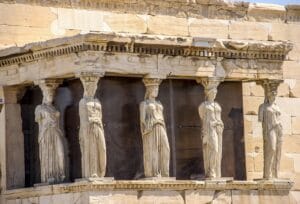
- Getting there: The Acropolis is in the middle of Athens. It is easily reached by metro, bus, or on foot.
- Tickets: A ticket is needed, which grants entry to other nearby sites.
- Best time to visit: Early morning or late afternoon to avoid the crowds and sun.
- What to bring: Comfortable shoes, water, hat, and camera.
Walking within the Acropolis is not merely a tourist walk. It is walking in history and culture.
🏙️ Surrounding Attractions in Athens
Acropolis is the hub of Athens. But there is more. Around it, there are plenty of excellent attractions to visit. They depict the city’s long history, culture, and daily life. Let us examine them one by one in detail.
🏛️ Acropolis Museum
The Acropolis Museum is just a stone’s throw away from the Acropolis hill. It is modern, airy, and very well designed. The museum houses treasures from the Acropolis itself. The visitors take a peek at statues, pottery, carvings, and remnants of the Parthenon frieze. One of the main attractions is the Caryatids. They are the female statues that originally decorated the Erechtheion temple. They are exhibited in the museum with care. Another excellent attraction is the glass floor. Individuals can walk over it and see old ruins underneath. The top floor of the museum has expansive windows. There, individuals can simply stare at the Parthenon directly. This creates an instant connection between the exhibit and the destination itself.
- Tip: Arrive early in the morning to avoid crowds.
- Ticket price: Around €10.
- Best time: Afternoon for small groups.
🏛️ Ancient Agora of Athens
The Ancient Agora was the pulse of life in ancient Athens. It was a political, business, and daily hangout location. Picture it as the town square of days gone by. Today, it is a large archaeological park. Tourists get to walk among ruins and feel the past come alive. The Temple of Hephaestus is the most important building here. It’s in fantastic condition, really better than the Parthenon in some ways. The temple is surrounded by beautiful gardens, which makes the visit peaceful. The Stoa of Attalos is another must-see place. It was rebuilt and now houses the Agora Museum. Inside, the visitor can discover tools, pottery, coins, and statues of daily life.
- Tip: Wear good shoes, the roads are bad.
- Ticket price: Around €8.
- Best time: Early morning, when the sun is milder.
🏛️ Roman Agora
The Roman Agora is smaller but equally fascinating. It was built later on, when the Romans dominated Athens. The main sight is the Tower of the Winds. This is an octagonal marble tower. It was once a clock, weather vane, and sundial. Imagine it, an ancient multi-purpose device! Going through the Roman Agora is short, but it’s yet another fragment of Athens’ past. You can see how different empires have left their marks on one city.
- Ticket price: Approximately €6.
- Best time: Combine with Plaka walk.
🏛️ Temple of Olympian Zeus
This temple is gigantic. It was Zeus’s temple, the king of the gods. It began in the 6th century BCE but wasn’t finished until Roman times. At its height, it contained 104 high columns. Today only 15 remain, but nonetheless, all visitors are amazed by them. The temple’s size shows how powerful Athens once was. Standing between the columns makes people realize just how small they are compared to the past.
- Ticket price: Around €6.
- Best time: Evening, to have beautiful light across the columns.
🏘️ Plaka Neighborhood
Plaka is called the “Neighborhood of the Gods.” It’s located just beneath the Acropolis. Its streets are charming and narrow. Houses here have red tile roofs and flowers with colorful hues. They are plentiful in neoclassical architecture. Plaka is famous for its shops. Travelers can buy souvenirs like jewelry, olive oil, and handmade sandals. It’s also great for eating. Taverns serve food like moussaka, souvlaki, and baklava. Walking around Plaka is as if entering the village of the city. It’s peaceful and romantic.
- Tip: Both day and night. At night, the Acropolis glows above the roofs.
🏛️ National Archaeological Museum
This is among the most important museums in the world. It holds objects from all over Greece. The tourists can see golden masks, bronze statues, and old vases. One of the most recognized objects in the collection is the Mask of Agamemnon, a gold face from Mycenae. Another highlight is the Antikythera Mechanism – an ancient machine known simply as the first computer. The museum is quite large, so expect to spend a minimum of two hours here.
- Ticket price: Around €12.
- Off-peak time: Early morning, before the crowds of bus tours.
🌄 Mount Lycabettus
To enjoy the finest view of Athens, go to Mount Lycabettus. It is the highest point of the city. Tourists can climb on foot or take a funicular railway. At the top, the entire city stretches out before you. The Acropolis is especially beautiful from there. It also has a tiny white chapel called St. George’s Church. It is magical at sunset. Many tourists have said it is the most romantic spot in Athens.
- Tip: Bring a light jacket if you go at night. It can be windy.
🏛️ Syntagma Square
Syntagma Square is Athens’ political heart. The Greek Parliament is located there. Before it stands the Tomb of the Unknown Soldier. Changing ceremony is performed by the guards every hour. Their uniform is special and traditional. Tourists visit the ceremony in large numbers. The square is also full. Cafes, restaurants, and hotels are located around the square. Tourists can easily locate other parts of the city from here.
- Tip: Visit on Sunday at 11 a.m. for the full ceremonial parade.
🛍️ Monastiraki Market
Monastiraki is colorful and lively. It is famous for its flea market. People sell clothing, antiques, leather goods, and souvenirs. Negotiation is part of the fun. The area is also crowded with many restaurants and cafes. One may experiment with the sweet pastry or Greek coffee here. Acropolis in the background also comes into sight from Monastiraki Square.
- Tip: Go on Sunday when there are additional antique sellers around.
🏟️ Panathenaic Stadium
The Panathenaic Stadium is special. It hosted the very first modern Olympic Games in 1896. The stadium is built entirely of white marble, which shines when sunlight hits it. The stadium can hold around 50,000 people. The visitors are allowed to walk on the track, take a seat on the marble benches, and dream about the excitement of the games. In the evening, the stadium is romantically set.
- Ticket price: Around €5.
- Time: Evening, when the lights make it glow.
The Acropolis is Athens’ pride and joy. But the opulence that surrounds it makes the experience even more rewarding. From temples to museums, from charming neighborhoods to markets, Athens offers unlimited exploration. Each of the sites that surround it adds a new aspect of the city’s past. They all blend together to provide a complete picture of Athens as a city in which present and past intersect. For visitors, it’s more than just sightseeing. It’s experiencing history, tasting culture, and sharing the pulse of one of the world’s greatest cities.
🏨 Hotels Near the Acropolis
Athens has numerous hotels within walking distance to the Acropolis. There are luxury hotels, boutique hotels, and budget-friendly options. There are several hotels with rooftop views of the Parthenon that’s spectacular at night. Top favorites include:
- Hotel Grande Bretagne (luxury). Electra Palace Athens (excellent view of Acropolis). Herodion Hotel (close to the Acropolis Museum). Plaka Hotel (price-conscious).
🌍 Global Importance
The Acropolis is a World Heritage Site of UNESCO. It represents democracy, art, and philosophy. It has served as the inspiration for centuries for politicians, artists, and architects. For travelers, it is not just a destination but an experience which unites the past and present.
🏁 Conclusion
Acropolis of Athens is a place where history, culture, and beauty meet. It is the tale of a great civilization. It is also a reflection of how heritage is capable of surviving for centuries of changes. Surrounded by museums, temples, and lively neighborhoods, the Acropolis is the heart of Athens. A visit there is not only a trip. It is a journey back in time. For visitors, Acropolis is irreplaceable. For the world, it is a symbol of wisdom, democracy, and art.
